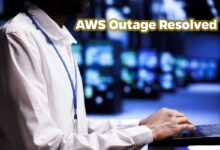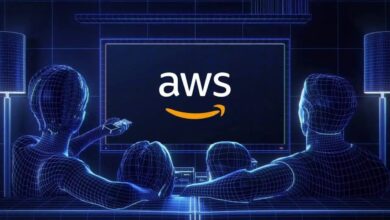AWS Certified Cloud Practitioner: 7 Ultimate Power Tips to Dominate the Exam
Thinking about starting your cloud journey? The AWS Certified Cloud Practitioner certification is your golden ticket to understanding Amazon Web Services from the ground up. It’s beginner-friendly, highly respected, and a solid foundation for any IT career in the cloud era.
What Is the AWS Certified Cloud Practitioner Certification?

The AWS Certified Cloud Practitioner is an entry-level credential offered by Amazon Web Services (AWS) that validates a candidate’s foundational knowledge of cloud concepts, AWS services, security, pricing, and support models. It’s designed for individuals who may not be technical experts yet but want to understand how AWS works in business and technical contexts.
Who Should Pursue This Certification?
This certification isn’t just for developers or engineers. It’s ideal for sales professionals, project managers, finance teams, and anyone involved in decision-making around cloud adoption. If you’re curious about how AWS powers modern applications and infrastructure, this cert gives you the vocabulary and insight to speak confidently.
- Non-technical professionals seeking cloud literacy
- IT newcomers aiming to break into cloud computing
- Business analysts evaluating cloud migration strategies
- Students exploring career paths in tech
Prerequisites and Eligibility
One of the best things about the AWS Certified Cloud Practitioner exam is that there are no formal prerequisites. You don’t need prior AWS experience, although having six months of exposure—whether through hands-on use, training, or self-study—can significantly boost your chances of passing.
“The Cloud Practitioner cert is the perfect starting point for anyone who wants to understand AWS without diving deep into code or architecture.” — AWS Training & Certification Team
Why Become an AWS Certified Cloud Practitioner?
Earning the AWS Certified Cloud Practitioner credential does more than just add a line to your resume. It signals to employers that you understand the core principles of cloud computing and how AWS enables innovation, scalability, and cost-efficiency.
Career Advancement Opportunities
According to AWS official certification data, certified professionals report higher job satisfaction and increased opportunities for promotions. Many companies now require or prefer cloud-certified employees when hiring for roles related to IT operations, sales engineering, and cloud consulting.
- Access to higher-paying entry-level cloud roles
- Greater credibility in cross-functional teams
- Pathway to advanced AWS certifications (e.g., Solutions Architect, Developer, DevOps Engineer)
Industry Recognition and Credibility
AWS is the world’s leading cloud provider, with over 32% market share as of 2024 (source: Gartner Cloud Market Share Report). Holding an AWS certification means you’ve been validated by the industry leader. Employers trust the AWS brand, and they recognize that certified individuals have met rigorous standards.
Improved Technical and Business Acumen
Even if you’re not writing code or managing servers, understanding how AWS services like EC2, S3, Lambda, and RDS work helps you make better business decisions. The AWS Certified Cloud Practitioner exam covers both technical and financial aspects of cloud usage, including total cost of ownership (TCO), operational expenditure (OpEx) vs. capital expenditure (CapEx), and pricing models.
Exam Structure and Key Domains
The AWS Certified Cloud Practitioner exam (CLF-C02) consists of 65 multiple-choice and multiple-response questions, with a time limit of 90 minutes. The passing score is 700 out of 1000, and the exam is administered through Pearson VUE or AWS Online Proctoring.
Domain 1: Cloud Concepts (26% of Exam)
This section tests your understanding of fundamental cloud principles. You’ll need to explain the benefits of cloud computing, compare different deployment models (public, private, hybrid), and describe the shared responsibility model.
- Define cloud computing and its characteristics (on-demand, scalability, elasticity)
- Explain the differences between IaaS, PaaS, and SaaS
- Understand global infrastructure (Regions, Availability Zones, Edge Locations)
Domain 2: Security and Compliance (25% of Exam)
Security is a top concern in the cloud. This domain evaluates your knowledge of AWS security best practices, compliance programs, and identity management.
- Explain the AWS Shared Responsibility Model
- Understand AWS Identity and Access Management (IAM) basics
- Identify key compliance programs like GDPR, HIPAA, SOC, and PCI DSS
- Know how AWS services like AWS Shield, WAF, and KMS enhance security
For detailed guidance, refer to the AWS Security Best Practices documentation.
Domain 3: Technology (33% of Exam)
This is the largest section of the exam and focuses on core AWS services. You must be able to identify the purpose and use cases of major services across compute, storage, networking, and databases.
- Compute: EC2, Lambda, Elastic Beanstalk, Auto Scaling
- Storage: S3, EBS, Glacier, Storage Gateway
- Networking: VPC, Route 53, CloudFront, Direct Connect
- Databases: RDS, DynamoDB, Redshift, ElastiCache
“You don’t need to configure these services, but you should know which one to recommend based on a scenario.” — AWS Exam Guide
Domain 4: Billing, Pricing, and Support (16% of Exam)
This domain assesses your ability to understand AWS pricing models, cost optimization strategies, and support plans.
- Explain the AWS Free Tier and its limitations
- Use the AWS Pricing Calculator and Total Cost of Ownership (TCO) Calculator
- Compare AWS support plans (Basic, Developer, Business, Enterprise)
- Understand Reserved Instances, Savings Plans, and Spot Instances
Visit the AWS Pricing Page to explore real-time pricing examples.
How to Prepare for the AWS Certified Cloud Practitioner Exam
Success on the AWS Certified Cloud Practitioner exam doesn’t come overnight, but with the right strategy, you can pass within weeks—even if you’re starting from zero.
Step 1: Leverage Official AWS Resources
AWS provides free, high-quality learning materials through the AWS Training and Certification portal. Start with the free digital training course called “AWS Cloud Practitioner Essentials,” which takes about 6–8 hours to complete.
- Includes videos, quizzes, and hands-on demos
- Covers all four exam domains comprehensively
- Available in multiple languages
Step 2: Supplement with Third-Party Courses
While AWS’s own training is excellent, many learners benefit from alternative teaching styles. Platforms like Udemy, Coursera, and A Cloud Guru offer structured courses tailored to the CLF-C02 exam.
- Udemy: “Ultimate AWS Certified Cloud Practitioner – 2024” by Stephane Maarek
- Coursera: “AWS Fundamentals” specialization by AWS
- A Cloud Guru: Interactive labs and practice exams
These resources often include practice questions that mimic the real exam format.
Step 3: Take Practice Exams
One of the most effective ways to prepare is by taking full-length practice tests. These help you identify weak areas, get comfortable with question formats, and build stamina for the 90-minute exam.
- AWS offers one free official practice exam
- Third-party providers like Tutorials Dojo and Whizlabs offer affordable paid exams
- Aim to consistently score above 80% before scheduling your real exam
Hands-On Experience: Why It Matters for the AWS Certified Cloud Practitioner
While the AWS Certified Cloud Practitioner exam is theory-heavy, hands-on experience makes concepts stick. You don’t need to be a developer, but creating a free AWS account and exploring the console can dramatically improve your understanding.
Create a Free Tier Account
AWS offers a Free Tier that includes 12 months of free access to popular services like EC2, S3, Lambda, and RDS. Use this to navigate the AWS Management Console, launch a simple instance, or upload a file to S3.
- Learn how to locate services in the AWS dashboard
- Explore IAM user creation and permissions
- Monitor your usage to avoid unexpected charges
Use AWS Educate or Sandbox Environments
If you’re concerned about costs or complexity, consider AWS Educate or sandbox platforms like Qwiklabs. These provide guided, risk-free environments where you can complete real-world tasks without touching your personal account.
- AWS Educate: Free access for students and educators
- Qwiklabs: Pay-per-lab or subscription-based learning
- Cloud Academy: Interactive learning paths with sandboxes
Common Mistakes to Avoid During Hands-On Learning
Many beginners accidentally run up charges or get overwhelmed by the console. To avoid this:
- Always set billing alerts in AWS Budgets
- Terminate unused resources (especially EC2 instances)
- Stick to Free Tier-eligible services unless you’re prepared to pay
- Don’t enable services like Data Transfer or NAT Gateways without understanding costs
Exam Day Tips and Strategies
The day of your AWS Certified Cloud Practitioner exam can be nerve-wracking, but proper preparation and mindset will set you up for success.
Before the Exam: Final Review and Setup
Don’t cram the night before. Instead, review your notes, go over flashcards, and ensure your testing environment meets requirements if taking the exam online.
- Ensure your computer has a working webcam and microphone
- Close all unnecessary applications and browser tabs
- Have a valid government-issued ID ready
- Test your internet connection speed
During the Exam: Time Management and Question Tactics
You have 90 minutes for 65 questions, which gives you roughly 1.3 minutes per question. Some questions are straightforward; others are scenario-based and require careful reading.
- Flag difficult questions and return to them later
- Eliminate obviously wrong answers first
- Watch for keywords like “MOST cost-effective,” “BEST security practice,” or “LEAST effort”
- Don’t overthink—many correct answers are the simplest or most AWS-recommended approach
After the Exam: What Happens Next?
Once you submit your exam, you’ll receive a pass/fail result immediately. If you pass, congratulations! You’ll get an official certificate via email within a few days and can share your digital badge on LinkedIn.
- Download your certificate from the AWS Certification Account
- Claim your Credly badge for social sharing
- Consider pursuing the next certification (e.g., AWS Solutions Architect – Associate)
What Comes After the AWS Certified Cloud Practitioner?
Earning the AWS Certified Cloud Practitioner is just the beginning. It opens doors to more advanced certifications and specialized career paths in cloud computing.
Pathway to AWS Associate-Level Certifications
The natural next step is the AWS Certified Solutions Architect – Associate (SAA-C03). This certification dives deeper into designing scalable, secure, and cost-effective applications on AWS.
- Requires hands-on experience with AWS services
- Covers VPC design, high availability, disaster recovery
- Highly sought after by employers
Other associate-level options include AWS Certified Developer – Associate and AWS Certified SysOps Administrator – Associate.
Specialized Certifications and Career Growth
Once you’ve gained experience, you can pursue professional and specialty certifications such as:
- AWS Certified DevOps Engineer – Professional
- AWS Certified Security – Specialty
- AWS Certified Machine Learning – Specialty
- AWS Certified Data Analytics – Specialty
These credentials position you as an expert in niche areas and can lead to six-figure salaries in cloud architecture, security, and data engineering roles.
Building a Cloud Career: Beyond Certifications
Certifications are powerful, but real-world experience is king. Consider contributing to open-source projects, building personal cloud projects, or volunteering for cloud migration initiatives at work.
- Join AWS user groups or attend AWS re:Invent
- Network with other cloud professionals on LinkedIn
- Stay updated with AWS blog posts and new service announcements
Real-World Impact of the AWS Certified Cloud Practitioner
It’s one thing to pass an exam, but how does the AWS Certified Cloud Practitioner certification translate into real value? Let’s look at some tangible outcomes.
Case Study: From Sales Rep to Cloud Consultant
John, a former sales representative at a software company, earned his AWS Certified Cloud Practitioner credential to better understand customer needs. Within six months, he transitioned into a cloud solutions consultant role, where he now helps clients design AWS architectures.
“The certification gave me the confidence to speak the same language as engineers. It changed my career trajectory.” — John D., Cloud Consultant
Organizational Benefits of Team Certification
Companies that invest in AWS certifications for their teams see measurable improvements in cloud adoption efficiency, cost management, and security posture. Teams with certified members are more likely to follow AWS best practices and avoid costly misconfigurations.
- Reduced cloud waste through better resource management
- Faster migration timelines due to increased cloud literacy
- Improved compliance and audit readiness
Global Demand for AWS Skills
According to LinkedIn job data, AWS is consistently ranked among the top in-demand skills worldwide. Job postings requiring AWS knowledge grew by over 40% between 2022 and 2024, with roles ranging from cloud architects to DevOps engineers.
What is the AWS Certified Cloud Practitioner exam cost?
The AWS Certified Cloud Practitioner exam costs $100 USD. This fee is subject to change, and AWS occasionally offers exam vouchers through training events or promotions. Students and educators may qualify for discounts via AWS Educate.
How long is the certification valid?
The certification is valid for three years. After that, you must recertify by passing the current version of the exam or a higher-level AWS certification to maintain your status.
Can I take the exam online?
Yes, AWS offers online proctored exams through Pearson VUE. You can take the test from home or office as long as you meet the technical and environmental requirements, including a quiet room, a reliable internet connection, and a working webcam.
Is the AWS Certified Cloud Practitioner worth it?
Absolutely. Whether you’re starting your IT career, switching roles, or enhancing your business acumen, this certification provides foundational knowledge that’s applicable across industries. It’s a low-cost, high-impact credential that opens doors and builds confidence.
How hard is the AWS Certified Cloud Practitioner exam?
It’s considered the easiest AWS certification, but “easy” doesn’t mean “trivial.” With proper study—typically 40 to 60 hours of preparation—most candidates pass on their first attempt. The key is consistent learning and practice.
The AWS Certified Cloud Practitioner certification is more than just a piece of paper. It’s a launchpad for your cloud journey, a signal of competence, and a gateway to better opportunities. Whether you’re aiming for a technical role or want to understand the cloud from a business perspective, this certification delivers real value. Start studying today, take that first step, and join the growing community of AWS-certified professionals shaping the future of technology.
Further Reading:









